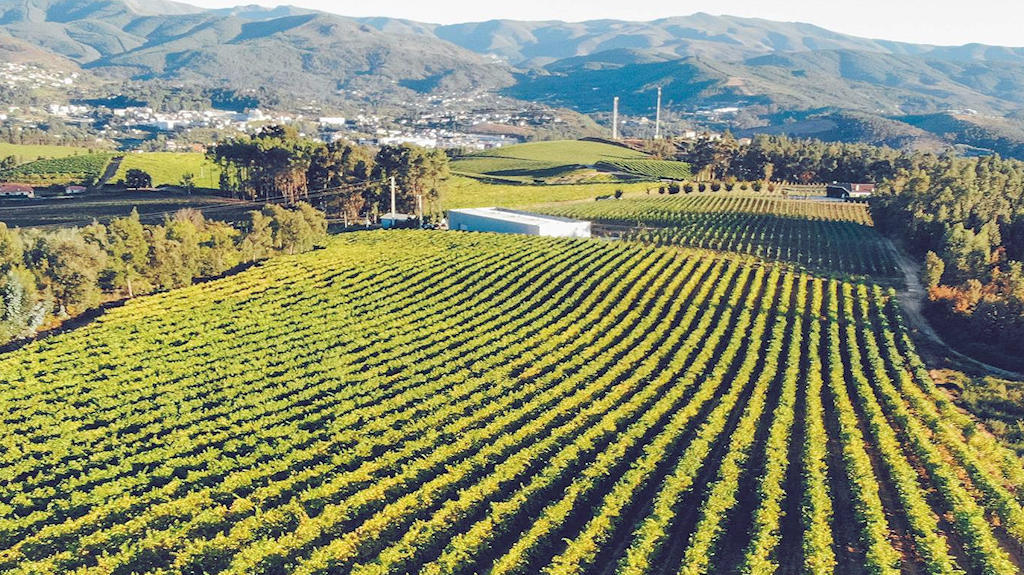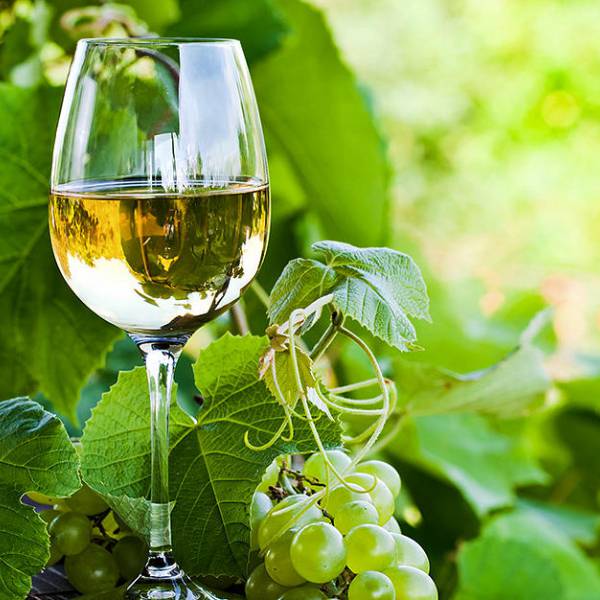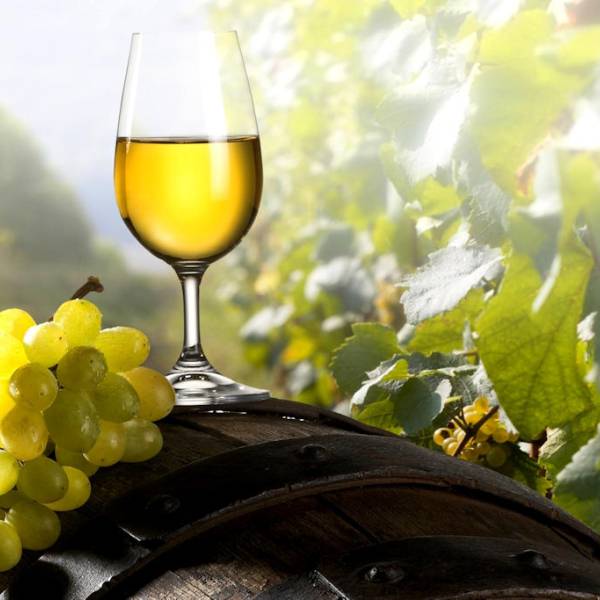The tale of Minho's wines dates back to ancient times, when the Romans recognized the region's viticultural potential. Over the centuries, the Celts contributed to the viticultural tapestry by introducing new grape varieties and innovative winemaking techniques. Later, the Moors left an indelible mark on Minho's culture and landscape during their occupation of the region. These historical influences have shaped Minho into the vibrant wine region it is today, blending tradition with innovation to create wines that are a true reflection of their terroir.
Minho's wines began to receive well-deserved recognition and prestige in the 18th century, thanks to the tireless efforts of the Marquis of Pombal (Marquês de Pombal). As a prominent figure in the Portuguese wine industry, the Marquis introduced sweeping reforms and established the country's first official wine regions. These endeavors led to the implementation of quality standards and regulations for Vinho Verde, positioning it as one of Portugal's inaugural Denominação de Origem Controlada (DOC) wines. Vinho Verde swiftly made its way to foreign shores, capturing the hearts of discerning wine lovers, particularly in Brazil, where Portuguese colonists celebrated its exceptional qualities.
However, the 20th century ushered in a period of challenges for Minho wines. Political and economic upheavals in Portugal, coupled with the strict controls imposed by the dictatorship, stifled innovation and hindered the diversity of Minho's wines. Nevertheless, with Portugal's entry into the European Union in 1986, new horizons emerged, bringing both opportunities and increased competition from other wine regions. Minho wines had to adapt to the evolving tastes and demands of the global market, navigating a landscape marked by change and uncertainty.
In the face of adversity, Minho wines have undergone a remarkable transformation in recent decades. A new generation of visionary winemakers has breathed new life into the region, embracing modern technology, undertaking extensive research, and implementing innovative marketing strategies. These pioneering individuals have boldly experimented with native and international grape varieties, embracing novel winemaking methods, and exploring diverse styles of wines. The result is an extraordinary array of wines that showcase the distinctive terroir of Minho and captivate enthusiasts with their complexity and depth. Today, Minho wines are celebrated as some of Portugal's most exceptional and quality-driven offerings, captivating the palates of discerning consumers far and wide.
Minho's geography and climate contribute significantly to the character of its wines. Situated on the enchanting northwest coast of Portugal, Minho spans a rectangular expanse, stretching from the Douro River in the south to the Minho River in the north. Covering approximately 10% of Portugal's land area, this captivating region is home to a vibrant population of around 3 million people. Minho is divided into four distinctive sub-regions: Monção e Melgaço, Lima, Cávado, and Ave, each with its own unique viticultural tapestry.
The interplay between the Atlantic Ocean and the mountainous terrain enveloping Minho shapes its geography and climate. The region enjoys a maritime climate characterized by mild temperatures, high humidity, and generous rainfall throughout the year. With an average annual temperature of approximately 15°C (59°F) and an average annual rainfall of about 1500 mm (59 inches), Minho's coastal areas experience cooler and wetter conditions compared to the sheltered inland areas, which benefit from the protective embrace of the mountains.
The mountains encircling Minho, part of the ancient Iberian Massif that spans Spain and Portugal, play a pivotal role in creating diverse microclimates within the region. These microclimates, shaped by factors such as exposure, altitude, and soil composition, provide winemakers with a rich palette of possibilities. Furthermore, the mountains act as a natural defense against pests and diseases that could threaten the health of the vineyards.
Minho's soils, predominantly derived from granite, schist, and clay, contribute to the unique character of its wines. Typically acidic, nutrient-poor, and well-drained, these soils exhibit variations in texture, color, and depth, influenced by the vineyards' location and elevation. Granitic sandy loam, schistose sandy loam, and clay loam are among the common soil types found in Minho. These soil compositions impart a distinct minerality, crisp acidity, and refreshing vibrancy to the wines, forging a profound connection between the terroir and the grapes.
At the heart of Minho's vinous tapestry lies a diverse range of grape varieties, both indigenous and international, each contributing its own chapter to the region's winemaking narrative. Alvarinho, the most widely planted grape variety in Minho, reigns supreme in the sub-region of Monção e Melgaço. This noble white grape, also found in Spain's Rías Baixas region under the name Albariño, gives rise to aromatic, elegant wines with delightful notes of citrus, peach, apricot, and a captivating mineral undertone.
Alongside Alvarinho, Minho showcases a splendid array of white grape varieties, including Loureiro, Arinto, Avesso, Azal, and Trajadura. Loureiro, revered for its fragrant and fruity character, imparts freshness and floral allure to the wines, boasting enchanting notes of lime, apple, pear, and rose. Arinto, with its elevated acidity, adds structure and longevity, bestowing the wines with hints of lemon, pineapple, and minerality. Avesso, a full-bodied and complex grape, yields rich and textured wines with captivating flavors of peach, melon, honey, and almond. Azal, known for its low alcohol content and high acidity, offers light and crisp wines that tantalize the palate with their green apple, lemon, and grassy notes. Trajadura, a versatile grape known for its productivity, contributes body and alcohol, showcasing pear, apple, and herbal nuances.
Among the red grape varieties, Vinhão, also known as Sousão in other Portuguese regions, takes center stage. This dark-skinned grape variety, boasting high acidity, lends itself to the creation of deep-colored, tannic wines redolent of blackberry, plum, cherry, and earthy undertones. Vinhão is often blended with other indigenous red grapes, such as Espadeiro, Borracal, Alvarelhão, and Cainho Tinto. Espadeiro, a light-bodied and fruity grape, contributes pale-colored wines with enticing aromas of strawberry, raspberry, and floral notes. Borracal, renowned for its rustic charm and high yield, adds an acidic and earthy character, teasing the taste buds with flavors of red currant, cranberry, and a hint of pepper. Alvarelhão, celebrated for its low tannin levels and elegant demeanor, imparts smooth and balanced wines, featuring delightful notes of cherry, violet, and spice. Cainho Tinto, a rare and low-alcohol grape, imparts light-colored, fresh wines boasting vibrant flavors of red berries, citrus, and herbaceous undertones.
While Minho proudly cultivates its indigenous grape varieties, it also embraces international varietals, including Chardonnay, Riesling, Cabernet Sauvignon, and Merlot. These international grapes primarily find their place in Vinho Regional (VR) wines, which offer winemakers greater freedom and flexibility in their winemaking approach. Often blended with native grapes, these international varieties enhance the modern appeal and diversity of Minho's wines, widening the range of flavors and profiles available to the discerning consumer.
One cannot speak of Minho without acknowledging the crown jewel of the region: Vinho Verde. With roots reaching back to the Middle Ages, Vinho Verde emerged as the wine of choice for local farmers who crafted a young, low-alcohol libation from early-harvested grapes. Contrary to its name, Vinho Verde does not refer to the color green but rather encapsulates the wine's vivacity and youthful character. Historically produced in small batches by individual farmers, Vinho Verde found its way to local taverns and markets, charming the taste buds of all who encountered its refreshing embrace. Whether white, red, or rosé, Vinho Verde exemplifies freshness, vivacity, and effervescence. Crafted from carefully selected grape blends, which vary depending on the sub-region and winemaker's preference, Vinho Verde showcases low alcohol content (usually between 9% and 11%), zesty acidity, a light body, and a delicate effervescence arising from the natural carbon dioxide released during fermentation. Vinho Verde is meant to be enjoyed in its youth, within one or two years of bottling, to preserve its invigorating freshness and fruit-forward nature.
Lisbon.vip Recommends
Elevate your wine journey with the exquisite and unparalleled Single-Varietal Vinho Verde. Delighting connoisseurs, this extraordinary style is meticulously crafted using a single grape variety, showcasing the prowess of Alvarinho and Loureiro for white wines, and Vinhão and Espadeiro for red wines. Distinguished by its elevated alcohol content, ranging from 11% to 14%, this wine exudes a remarkable depth, complexity, and aging potential, surpassing its blended counterparts. Embodied in a translucent hue, the refined and elegant aroma entices with intricate nuances. For an even more exceptional experience, the option to oak-age this masterpiece promises an extraordinary journey through flavors and structure, elevating your oenophilic exploration to new heights.
Minho wines embody the spirit of a region that has triumphed over adversity, continuously evolving and adapting to a changing world. The passionate winemakers of Minho have skillfully crafted a tapestry of wines that embody their unwavering dedication to quality, authenticity, and innovation. With each sip, one embarks on a sensory journey through Minho's captivating landscapes, unveiling the secrets whispered by the ancient soils, the Atlantic breeze, and the mountains that guard this remarkable terroir.
Minho wines invite exploration and discovery, offering wine enthusiasts an opportunity to savor the true essence of Portugal's northernmost wine region. Whether it be the crisp elegance of Vinho Verde, the alluring richness of the reds, the graceful charm of the rosés, or the effervescent delight of sparkling wines, Minho beckons with open arms, ready to share its vibrant tapestry of flavors and stories with those seeking a unique vinous experience.










